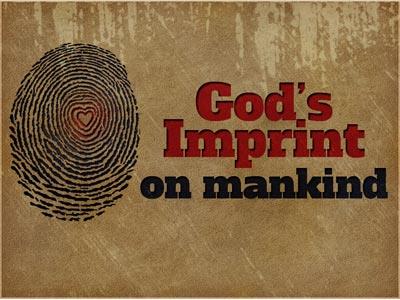-
Genesis Sermon 11: Second Generation Faith
Contributed by Elmer Towns on Nov 28, 2017 (message contributor)
Summary: This is a sermon about the creation story.
A. INTRODUCTION GENESIS 4:25 - 5:5
"And Adam knew his wife again; and she bare a son, and called his name Seth: for God, said she, hath appointed me another seed instead of Abel, whom Cain slew. And to Seth, to him also there was born a son; and he called his name Enos: then began men to call upon the name of the Lord. This is the book of the generations of Adam. In the day that God created man, in the likeness of God made he him; male and female created he them; and blessed them, and called their name Adam, in the day when they were created. And Adam lived an hundred and thirty years, and begat a son in his own likeness, after his image; and called his name Seth: And the days of Adam after he had begotten Seth were eight hundred years: and he begat sons and daughters: And all the days that Adam lived were nine hundred and thirty years: and he died" (Genesis 4:25-5:5)
1. Three facts about history are seen in Genesis 4 and 5.
a. God preserves and records the divinely ordained line of the promise seed.
b. God’s command "to be fruitful and multiply" was carried out.
c. God’s curse was in effect and people had to live with it.
2. The "Cain line" boasted of self accomplishments. (i.e., built cities, polygamy, poetry, arts, cattle, inverted metallurgy. The "Seth line" sought God, "Then began men to call upon the name of the Lord" (4:26).
3. The Cain line was the seed of the serpent, the Seth line is, "The seed of the woman."
B. WHAT THE SECOND GENERATION LEARNED
1. People learned that God’s promise would be fulfilled. The name Seth means, "substituted" meaning Eve had faith in God that the promise was still valid. "God . . . hath appointed me another seed instead of Abel" (4:25).
2. People learned humanness. Seth called his son "Enos" which meant "frailty."
3. People were learning to respond to humanness in faith. "Then men began to call upon the name of the Lord" (4:22).
a. Knew the Messiah was not coming immediately.
b. Knew their children had a fallen nature.
4. People were learning public worship. Note the plural, "Began men to call upon the name of the Lord" (4:26). Replaced individual meeting with God (perhaps at gate to the garden?)
5. People were learning the practice of prayer.
a. God’s immediate presence no longer available.
b. The word "call" implies a continual practice.
6. People were learning the doctrine of the ages. (i.e., time goes on). "By whom (Christ) also he made the world (ages)" (Heb. 1:2). "Through faith we understand that the world (ages) was formed by the Word of God" (Heb. 11:3).
7. People were learning the nature of God. "The name of the Lord" (4:26). His name represents all that He is and does. (i.e., creation, justice and holiness, mercy, eternity, omnipresence, omniscience, omnipotence, etc.).
"Whosoever shall call upon the name of the Lord, shall be saved" (Rom. 10:13).
C. THE HERITAGE OF THE PROMISE SEED
1. Hebrew tradition tells us Adam wrote Chapters 1-5.
"This is the book of the generation of Adam" (Gen. 5:1).
a. Adam could write.
b. Adam kept a record of both Cain’s and Seth’s line.
2. Adam was created in God’s likeness, and then he fell. Now children are created in Adam’s likeness. "Adam . . . .begat a son in his own likeness, after his image (5:3).
3. What does it mean to be born in Adam’s likeness?
a. Sin. "As by one man sin entered into the world, and death by sin, death passed upon all men" (Rom. 5:12).
b. Limited.
4. Another implication of the Trinity. "God created . . . God made He him, male and female created He them" (5:1,2).
5. Why did Adam wait so long to give birth to Seth? "Adam lived a hundred and thirty years and begat a son, and called his name Seth" (5:3).
a. Cain was flourishing.
b. Grieved.
c. Had others.
d. Seth is named as heir of Messiah.
6. Why did men live so long, the oldest man was Methuselah who lived 964 years?
a. Slow and steady decline after fall (Adam would have lived forever).
b. Antediluvian climate and environment.
c. Purity of physical body, no bacteria, and other microorganisms to produce illness. No parasites and viral systems.
d. No in-breeding of ancestors.
D. CONCLUSIONS
1. We can have faith in the Genesis record. It is not mythological.
2. The Genesis record is not inconsistent with verified scientific laws and demonstrable data. Whatever action Genesis describes is consistent with science.
3. Evolution is a theory that has not been proven and there is a growing body of data that demonstrates evolutionary assumptions are inconsistent with scientific data.

 Sermon Central
Sermon Central



